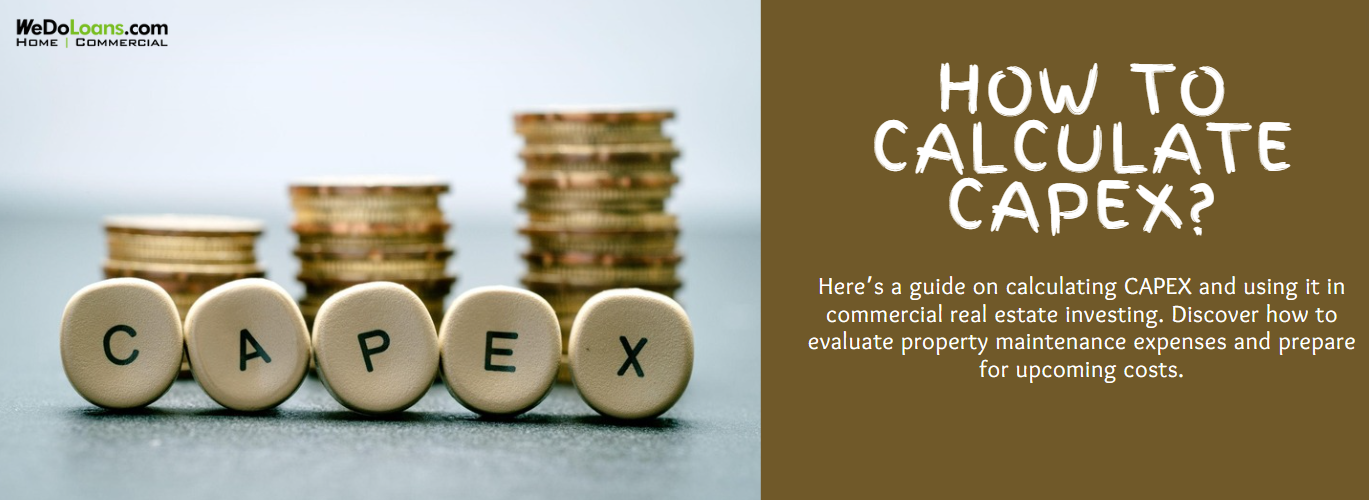
Investors in commercial real estate need a clear grasp of the financial commitment to properties and assets. The Capital Expenditure (CapEx) formula provides this insight. Here’s a guide on computing and utilizing CapEx in commercial real estate investment.
What are Capital Expenses (CapEx) in Real Estate?
Capital expenses cover the costs essential for acquiring, maintaining, and enhancing physical assets. In commercial real estate, this primarily includes expenses related to purchasing, upkeep, renovations, and expansions of properties. Other sectors may have higher expenditures for equipment (e.g., assembly line machinery) or infrastructure (e.g., oil pipelines). Commercial real estate is notably capital-intensive, with among the highest CapEx rates.
Understanding CapEx aids investors in understanding the investment in their portfolio’s growth. It also helps in assessing whether operational expenses (OpEx) adequately cover property maintenance costs.
Types of Capital Expenditures
Capital expenditures typically span more than one year. Expenditures lasting less than a year usually fall under operating expenditures.
For instance, a manufacturer’s materials are classified as OpEx, whereas equipment falls under CapEx. In commercial real estate, CapEx commonly falls into these categories:
- Acquisition: Costs associated with purchasing new properties, including purchase price, closing costs, surveys, inspections, and real estate agent fees. Subscription fees for property screening services are considered OpEx as they do not contribute to asset acquisition.
- Land Improvement: Expenses for enhancing the land’s value or functionality, such as landscaping, paving, hardscaping, and lighting installations. Notably, constructing a parking garage isn’t a land improvement, but paving driveways and parking lots are.
- Building Improvement: Costs for maintaining, updating, or enhancing existing structures, from roof replacements and unit renovations to adding storage sheds or installing new amenities like swimming pools.
- Building Expansion: Expenses related to constructing new buildings or expanding existing ones, such as adding parking garages or extending current structures.
- Equipment: Costs for maintaining, repairing, or replacing significant equipment like HVAC systems, water heaters, or on-site snow removal equipment, which typically have a long lifespan.
These expenses are intended for maintenance or enhancement and are expected to endure beyond one year. Although there isn’t a standardized method for categorizing CapEx, most items fall into these groups.
Uses of CapEx
Capital expenditures are employed to maintain or enhance physical assets. Real estate investors use CapEx for:
- Increasing Property Value: Renovations and expansions typically boost property value, while regular maintenance ensures its upkeep.
- Enhancing Revenue Generation: Upgrades and improvements can increase revenue streams through higher rental rates or additional fees (e.g., parking or storage fees).
- Extending Asset Lifespan: Regular maintenance prolongs the life of assets, reducing the need for frequent replacements.
- Ensuring Safety and Compliance: CapEx may be required to enhance property safety or comply with regulatory codes.
- Tax Benefits: Depending on regulations, CapEx may be depreciable over time, offering tax advantages. Professional tax advice is recommended for guidance.
CapEx vs Operating Expenses (OpEx)
CapEx refers to significant investments in physical assets, while OpEx encompasses day-to-day operational costs like property taxes, insurance premiums, management fees, and utilities. Routine repairs and maintenance also fall under OpEx. Typically, CapEx spans more than one year, while OpEx is incurred within a single fiscal year.
Calculation Methods for CapEx
CapEx can be computed using various methods:
- Direct Costs: Summing up actual expenses for long-term maintenance or improvements, suitable for smaller real estate holdings.
- Cash Flow Statements: Analyzing expenses listed in cash flow statements under categories like “investing activities.”
- Net PP&E Increase: Calculating based on changes in Property, Plant, and Equipment (PP&E), factoring in depreciation from income statements.
CapEx Formula
Calculating CapEx involves straightforward arithmetic, with the Net PP&E Increase method being more detailed:
CapEx = Ending PP&E – Beginning PP&E + Depreciation
Where:
- Ending PP&E is taken from the final balance sheet of the reviewed period.
- Beginning PP&E is from the initial balance sheet of the period.
- Depreciation is sourced from the income statement.
Example Calculation of CapEx
For instance, if a property’s PP&E was $800,000 last period, rising to $950,000 this period, with $50,000 in depreciation, CapEx would amount to $200,000:
CapEx = $950,000 – $800,000 + $50,000 = $200,000
Effective CapEx Management Tips
Given the substantial nature of capital expenditures, effective management is crucial. Consider these strategies:
- Forecast and Budget: Anticipate future CapEx needs and allocate funds accordingly.
- Monitor Expenditures: Regularly review CapEx spending against strategic objectives and financial benchmarks.
- Utilize Depreciation Schedules: Understand tax implications and asset valuation through depreciation schedules.
- Prioritize Preventative Maintenance: Proactive upkeep can prevent larger, costlier repairs.
- Negotiate with Suppliers & Contractors: Seek competitive pricing for materials and services to control costs.
Conclusion
Efficient management and understanding of CapEx are pivotal for sustaining and expanding real estate investments. Track expenditures meticulously to comprehend spending on significant property repairs and enhancements.
